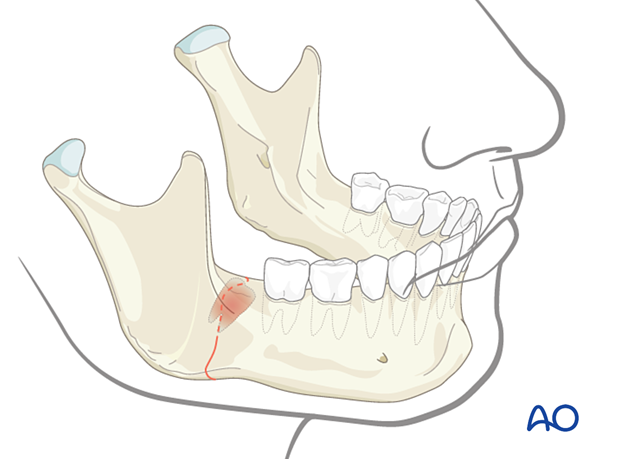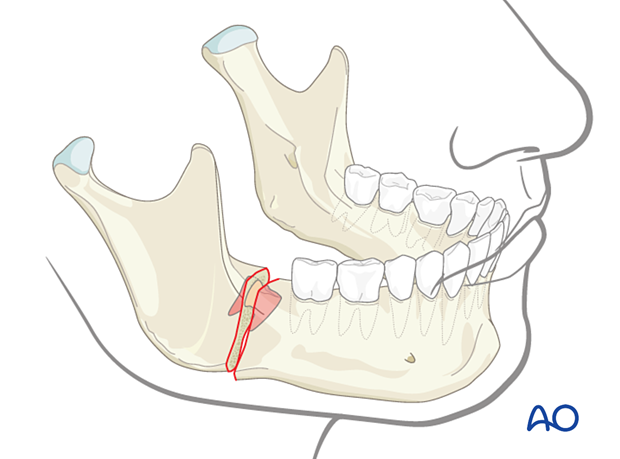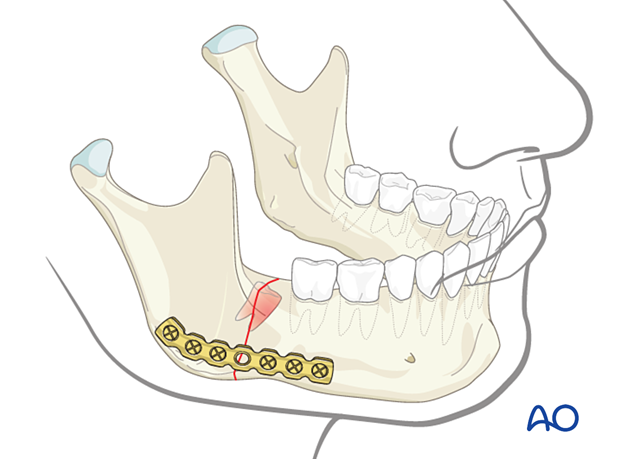Teeth in the line of fracture
1. General considerations
A common problem in managing mandibular fractures involves dealing with teeth in the line of fracture. Commonly, there are impacted wisdom teeth associated with mandibular angle fractures. However, any fracture involving the jaw's dentate areas can involve erupted teeth in the fracture line.
The surgeon can either remove the offending tooth or leave it in place if it is thought not to compromise the result of fracture treatment.
Any fracture that involves the periodontal ligament space of an erupted tooth should be considered an open (contaminated) fracture, requiring administration of systemic antibiotics, at least until the fracture has been reduced and stabilized.
Because many fractures through the angle communicate with either the erupted third or second molars, most angle fractures are open. If the fracture extends only into an unerupted third molar area, and there is no break in the surface mucosa, such fractures are considered closed.
Closed fractures may not require antibiotics before surgery but may be treated with prophylactic antibiotics in the perioperative period.

2. Indications
Indications for removal of teeth in the line of fracture
- Tooth luxated from its socket and/or interfering with reduction of the fracture
- A tooth that is fractured (as illustrated)
- A tooth with advanced dental caries carrying a significant risk of abscess during treatment
- A tooth with advanced periodontal disease with mobility which would not contribute to the establishment of a stable occlusion
- A tooth with existing pathology such as cyst formation or pericoronitis

Indications to leave teeth in the line of fracture
- A tooth that does not interfere with the reduction and fixation of the fracture
- If removing the tooth requires bone resection, which compromises the fracture site and possible plate/screw fixation
- A tooth that is in good condition and assists in establishing occlusion and reducing the fracture.
3. Postoperative considerations
When an infection arises during the postoperative period, carefully evaluate teeth in the fracture line as potential infection sources.














